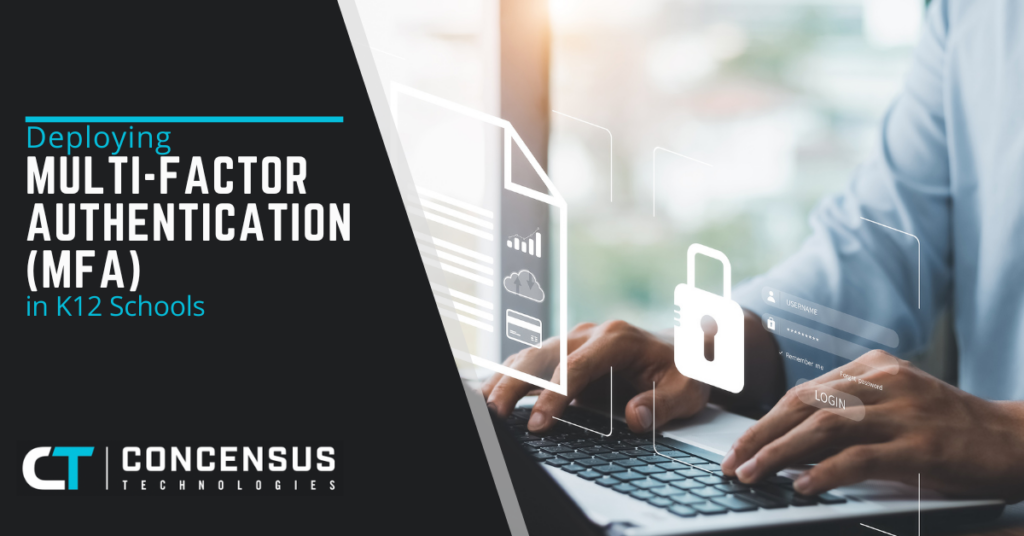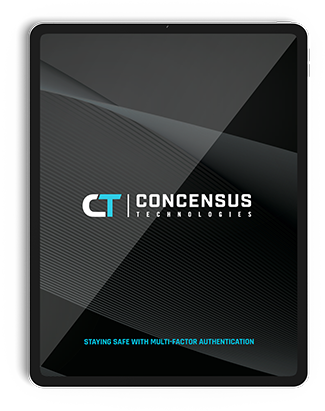Deploying Multi-Factor Authentication (MFA) in K12 Schools
| February 23, 2024
In an era where cybersecurity threats are constantly evolving, educational institutions, especially K12 schools, face increasing pressure to protect sensitive data and maintain secure digital environments.
Deploying Multi-Factor Authentication (MFA) emerges as a vital strategy to enhance security measures and safeguard against unauthorized access. This article delves into the significance of MFA implementation in K12 schools, exploring its benefits, challenges, and best practices.
Understanding Multi-Factor Authentication (MFA)
Multi-Factor Authentication (MFA) is a security mechanism that requires individuals to provide two or more forms of identification before granting access to a system or application. These factors typically include something the user knows (like a password), something they have (like a smartphone or token), or something they are (biometric data such as fingerprints or facial recognition).
By requiring multiple factors for authentication, MFA significantly enhances security compared to traditional single-factor methods.
Key Components of MFA:
- Something You Know: This involves knowledge-based factors such as passwords, PINs, or security questions.
- Something You Have: This includes possession-based factors like smartphones, security tokens, or smart cards.
- Something You Are: This entails biometric factors such as fingerprints, facial recognition, or iris scans.
Benefits of Implementing MFA in K12 Schools
The adoption of MFA in K12 schools offers a myriad of benefits, ranging from bolstering cybersecurity defenses to safeguarding sensitive student and faculty information. Here are some key advantages:
- Enhanced Security: MFA provides an additional layer of defense against unauthorized access by requiring multiple forms of authentication.
- Protection Against Password-Based Attacks: With the prevalence of password-related breaches, MFA mitigates the risk of unauthorized individuals gaining access through stolen or compromised passwords.
- Compliance with Data Privacy Regulations: Implementing MFA helps educational institutions comply with data privacy regulations such as the Family Educational Rights and Privacy Act (FERPA) by strengthening access controls and protecting student records.
Challenges in MFA Deployment
While the benefits of MFA implementation are clear, educational institutions may encounter several challenges during the deployment process. It’s essential to address these challenges proactively to ensure successful implementation:
- User Resistance: Introducing new authentication methods may face resistance from users accustomed to traditional login processes. Proper training and communication are essential to overcome this hurdle.
- Integration Complexity: Integrating MFA solutions with existing IT infrastructure and applications can be complex, requiring careful planning and coordination.
- Cost Considerations: While MFA offers substantial security benefits, there may be associated costs for licensing, hardware tokens, or biometric scanners. Educational institutions must assess the financial implications and budget accordingly.
Best Practices for MFA Implementation in K12 Schools
To maximize the effectiveness of MFA deployment in K12 schools, it’s essential to follow best practices and guidelines:
- Conduct a Security Assessment: Begin by conducting a comprehensive security assessment to identify vulnerabilities and determine the most suitable MFA solution for the school’s needs.
- Choose the Right Authentication Methods: Select authentication methods that strike a balance between security and user convenience, considering factors such as ease of use and accessibility for students and faculty.
- Implement a Phased Rollout: Gradually introduce MFA across different user groups and applications to minimize disruption and facilitate user adoption.
- Provide Ongoing Training and Support: Offer training sessions and resources to educate users about MFA best practices, troubleshooting common issues, and reporting suspicious activities.
- Regularly Update and Test: Continuously monitor and update MFA configurations to address emerging threats and vulnerabilities. Conduct regular testing and audits to ensure the effectiveness of security measures.
Get Started With MFA Today
Deploying Multi-Factor Authentication (MFA) is essential for K12 schools to strengthen their cybersecurity posture and protect against evolving threats. By implementing MFA, educational institutions can enhance security, safeguard sensitive data, and ensure compliance with privacy regulations.
However, successful MFA deployment requires careful planning, user education, and ongoing maintenance. By following best practices and addressing challenges proactively, K12 schools can reap the full benefits of MFA while mitigating risks effectively.For more information on implementing MFA solutions tailored to your K12 school’s needs, contact Concensus Technologies. We are committed to helping educational institutions enhance their cybersecurity defenses and protect sensitive information.

